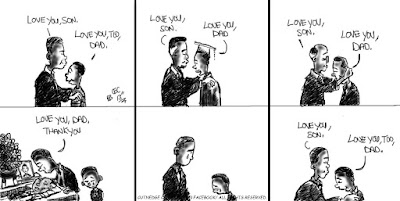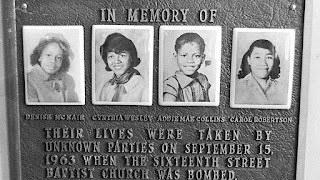 |
| Image Source: Famous Scientists |
Reginald L. Goodwin's Posts (3123)
 |
| Image Source: Link below |
Topics: Diversity in Science, Education, STEM, Women in Science
Physics World: Parents' enthusiasm for science boosts teens' exam scores, Michael Allen
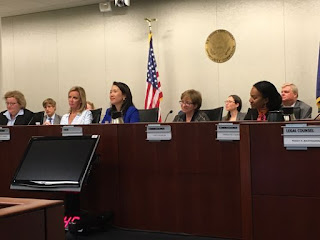 |
| The Equal Employment Opportunity Commission during its May 18, 2016 hearing on diversity in the tech industry. (Photo: Mike Snider, USA TODAY), Link below |
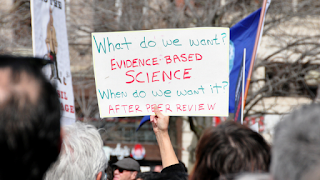 |
| Image Source: Link below. I realize it doesn't "chant," but you clearly get the meaning and intent. |
 |
| Science Magazine: Presidential Medal of Freedom Honors a NASA 'computer' |
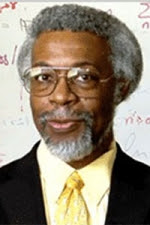 |
| Distinguished University Professor, Regents Professor & Director |
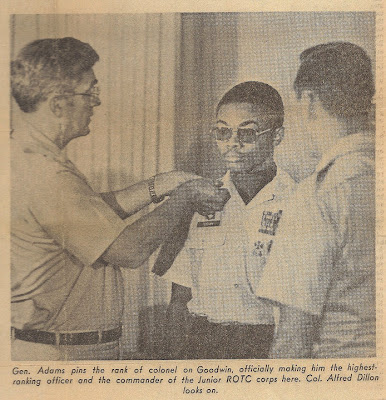 |
| Image Source: The (former) Winston-Salem Sentinel |
Call it a Black History Month Twofer. Tomorrow will be a twofer with a slight twist for the month and physics. You'll see what I mean.
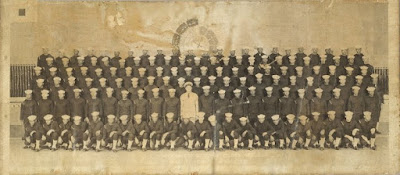 |
| Robert H. Goodwin is kneeling, lower left. |
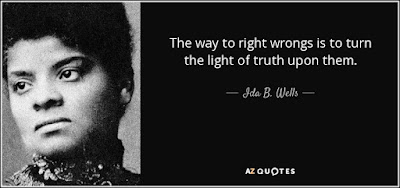 |
| Image Source: AzQuotes.com |
 |
| Wall Street Journal reporter Daniel Pearl disappeared in the Pakistani port city of Karachi on Jan 23, 2002 after telling his wife he was going to interview an Islamic group leader. AFP/Getty Images |
 |
| Wilmer Souder, Physicist, National Bureau of Standards (precursor to NIST) |
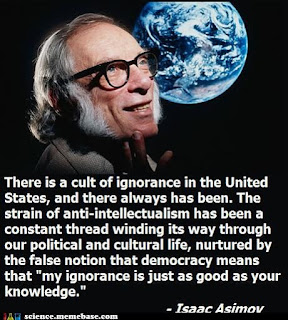 |
| Sadly, an apropos meme I've used before. |
Topics: African Americans, History, Diaspora, Diversity in Science, Women in Science
Amazon:
* Amusing Ourselves to Death: Public Discourse in the Age of Show Business,
Neil Postman
Anti-Intellectualism in American Life, Richard Hofstrader
Related Links:
Bill Moyers: The GOP and the Rise of Anti-Knowledge, Mike Lofgren
Ohio Central History: The Know-Nothing Party
 |
| Image Source: Ironically, The Wharton School of Business |
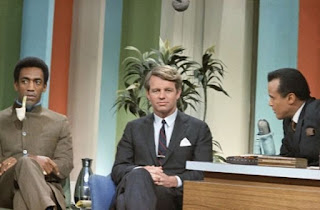 |
| Image Source: Pinterest |
| Image Source: Futurism |
Topics: Biology, Exobiology, Exoplanets, Futurism, Mars, Space Exploration
 |
| The sample appears as a dark area near the center of this micrograph of the diamond-anvil cell. Credit: X. Dong et al. Nat. Chem. 2017 |
Topics: Chemistry, Chemical Physics, Materials Science
Helium doesn’t play well with others. Beyond its noble gas designation on the periodic table, it has the lowest electron affinity—zero—among the elements, and the highest ionization energy. Scientists have managed to mechanically pack He atoms with other elements, but the He has little effect on those compounds’ characteristics.
Now an international team has presented evidence for a compound whose electronic structure and thus its physical properties are influenced by its He components. Researchers led by Artem Oganov ran a crystal structure prediction algorithm to play matchmaker for He and found that the compound Na2He should form at high pressures. The researchers shared their prediction with Alexander Goncharov and colleagues, who loaded He gas and solid sodium into a diamond-anvil cell at the Carnegie Institution for Science. After increasing the pressure to 140 GPa and heating the sample, Goncharov’s team noticed a marked shift in material properties. New peaks appeared in x-ray diffraction patterns, and the sample’s melting point rose to more than 1500 K; pure Na melts at about 550 K.
Scientific American: Helium compound may form under pressure, Andrew Grant
It would literally be decades before we found out this was a part of African American History, as the book and movie "Hidden Figures" reveals. We have been, and always will be a part of the fabric of this nation's progress forward. Regarding us as lazy, stupid, useless can only lead to the United States regression into third world status. It has the logic of shooting oneself in the foot and expecting "the other" to feel the pain.
I guess for my mother, it was t-minus six months and counting (I was happily gestating in her womb)...
It took chutzpah, moxie for a human being to consciously strap (at that time) himself to a large lit stick of dynamite with no guarantee that the procedure, though thoroughly calculated and considered, would not end in disaster.
So was this Marine Corp pilot, who confidently climbed into a Mercury rocket - Friendship 7, and took the first flight by an American to orbit the Earth.
Mercury - Gemini - Apollo: it would change our world with semiconductor-manufactured spinoff technologies that we now take for granted. It would change our focus, our nerve on what was possible. We would look to the stars and listen for signs of humanity's cousins.
50 years later: Godspeed, John Glenn
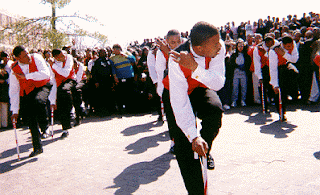 |
| Members of the Kappa Beta Chapter of Kappa Alpha Psi Fraternity, Inc perform a step show at the University of Memphis in 1999 Note that the average cane is about knee high (app. 2 feet), image source at site |
Topics: African Americans, History, Diaspora, Diversity in Science, Women in Science
Sun has baked me,
Looks like between 'em they done
Tried to make me
Stop laughin', stop lovin', stop livin'--
But I don't care!
I'm still here!
I am the captain of my soul.
Step Afrika: What is Stepping?
The Art of Stepping: History of the Art of Stepping
University of Florida Multicultural Guide: What is Strolling?
Wikipedia: Gumboot dance
Wikipedia: Stepping (African-American)
Kappas on YouTube (Hey, I'm a member, so I'm GOING to be partial):
Howard Homecoming
Maniac Drew Brown (Cane Master)
Southern Province Step Show
The Art of Twirling
University of Miami, TEDx
